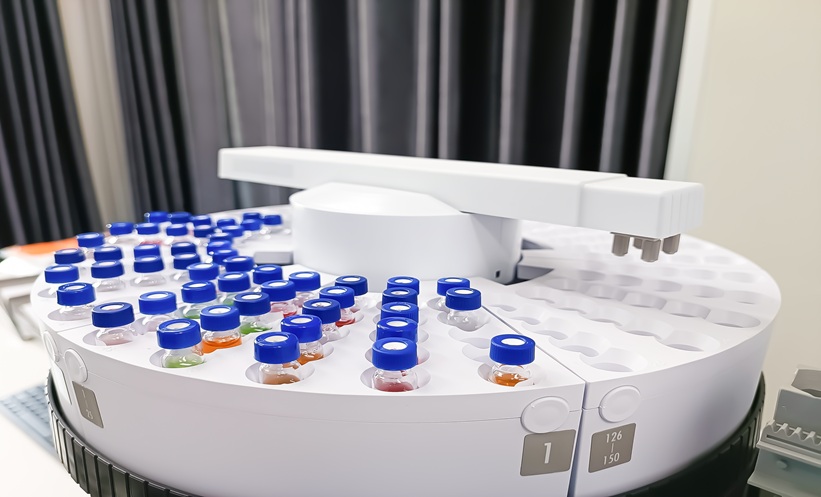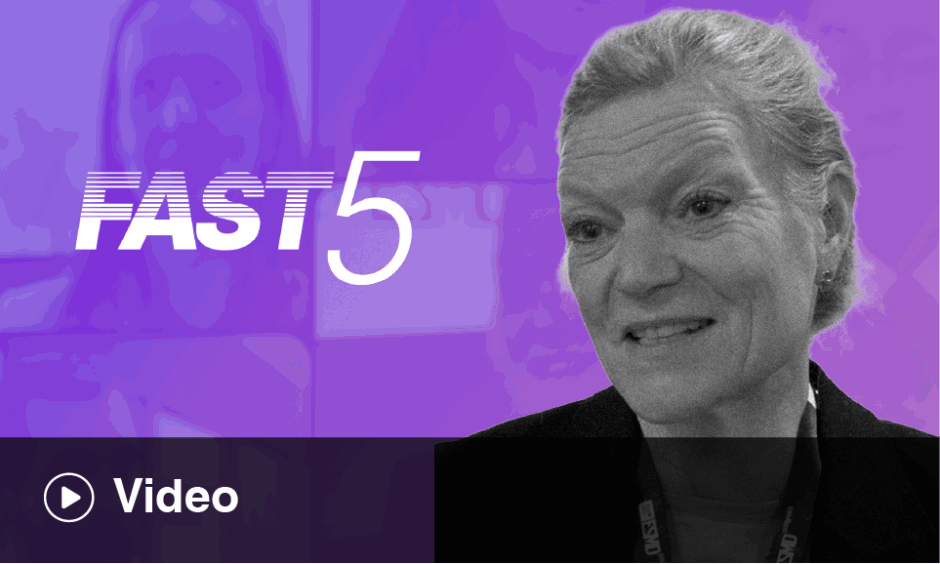Komal Jhaveri: Breast Medical Oncologist and Early Drug Development Specialist, Memorial Sloan Kettering Cancer Center, New York, USA
Citation: EMJ Oncol. 2025. https://doi.org/10.33590/emjoncol/MTNO4310
![]()
What initially inspired you to specialise in breast cancer?
When I think about breast cancer, I think about how it challenges us to pair cutting-edge science and innovation with humanity and genuine compassion. I feel truly inspired by the hope patients carry, the strength, the resilience, and the courage they show, and the opportunity to then turn that hope into progress through science. More importantly, I would say that it’s a real privilege to build a long-term, longitudinal relationship with patients who have breast cancer and their families, because you get to walk alongside them through their diagnosis, treatment, and survivorship. That ongoing connection really gives incredible meaning to the science and the care that we deliver.
What do you see as the most transformative recent breakthroughs in targeted therapies for metastatic breast cancer, particularly in oestrogen receptor (ER)-positive, human epidermal growth factor (HER)2-positive, HER2-low, and triple-negative subtypes?
We have come a very long way in the management of breast cancer and breast cancer subtypes. As you pointed out, the ER-positive, HER2-positive, and triple-negative breast cancer subtypes are examples where I think we’re now matching treatments to tumour biology. We have targeted therapies against specific mutations. In the ER-positive realm alone, in the last 2 years, we’ve had four approvals by matching these precision-based oncology therapies. More importantly, antibody–drug conjugates (ADC) have also shaped our subtyping and blurred the subtype boundaries. We now have ADCs, not just for HER2-positive or triple-negative breast cancer, but for categories such as HER2-low and HER2-ultra-low, subtypes that didn’t exist a few years ago.
Last but not least, we’re also now seeing therapies against central nervous system metastases or brain metastases, with agents and combination strategies in that space as well. This really speaks to how we’ve been able to overcome some of the previous unmet needs. Again, there is a lot more work to do, but I think that we have definitely come a long way from where we started.
How are novel ADCs shaping the treatment landscape and improving patient outcomes?
I think that ADCs are here to stay, and I envision them taking over chemotherapy in the future. They provide a targeted way of delivering a very potent and otherwise toxic payload directly to the tumour, with the idea of having slightly less toxicity than what we normally would have seen with systemic chemotherapy. These highly potent payloads, which otherwise could not be given on their own, have also improved efficacy. This has really transformed our landscape and treatment paradigms.
With HER2-positive breast cancer, we had the very first prototype ADC, trastuzumab emtansine, in 2013, based on the EMILIA trial. Since then, we’ve had a newer generation of ADCs with improved linker technologies and more potent payloads, such as trastuzumab deruxtecan, sacituzumab govitecan, and datopotamab deruxtecan. We know that trastuzumab deruxtecan has been approved in HER2-positive disease. It has shown activity in second-line settings and beyond, and now we also have data for patients with brain metastases and in the first-line metastatic setting.
At this year’s European Society for Medical Oncology (ESMO) Congress, we also saw practice-changing data in the early-stage setting with trastuzumab deruxtecan. This is truly transformative in terms of what we have been able to achieve. Sacituzumab govitecan was initially approved for triple-negative breast cancer and was later approved for heavily pre-treated hormone receptor-positive breast cancer. We also saw promising new data at ESMO in the first-line triple-negative metastatic setting from the ASCENT-03 trial.
Lastly, the third agent to join the treatment paradigm is datopotamab deruxtecan. This is a trophoblast cell surface antigen 2 (TROP2)-directed ADC, already approved based on the TROPION-Breast01 study in hormone receptor-positive breast cancer. We now have practice-changing overall survival benefits, first reported as a press release, and later presented at the annual ESMO Congress from the TROPION-Breast02 study in triple-negative breast cancer. These are very exciting times across all breast cancer subtypes, as we are now seeing how these agents can be used earlier in metastatic and even early-stage settings to further improve outcomes for our patients.
What strategies are being explored to overcome resistance mechanisms in breast cancer therapies?
When we think about resistance, the ER-positive subtype is a great example. There, we know that the most important target is the oestrogen receptor itself. While we have endocrine therapies that are very effective, we have also learned that, unfortunately, resistance is inevitable in the majority of our patients. That is why our research efforts have focused on identifying the mechanisms of endocrine resistance and developing therapies to target those resistance pathways.
This has led to real success stories. We now have four agents targeting the PI3K–AKT–mTOR pathway. We started with everolimus, which targets the most downstream node, mTOR, and achieved approval for that in 2012. Then, in 2019, we had approval for alpelisib, a PI3K inhibitor used with endocrine therapy, based on the SOLAR-1 trial. In 2023, we saw approval for the protein kinase B (AKT) inhibitor capivasertib, in combination with fulvestrant, based on the CAPItello-291 study for PI3K/AKT/PTEN-altered tumours. Most recently, we had a triplet strategy using another alpha-specific PI3K inhibitor, inavolisib, in combination with fulvestrant and palbociclib in the first-line PIK3CA-mutated, endocrine-resistant setting. That triplet strategy, for the first time with this pathway, showed not only a progression-free survival benefit but also an overall survival benefit, which has been very meaningful and practice-changing for us.
Another good example of overcoming resistance in ER-positive breast cancer is the development of ESR1 mutations, which arise under the selective pressure of aromatase inhibitors in the metastatic setting. Here, we are not necessarily seeing other stem-cell-like mechanisms driving resistance; rather, we see the main target itself mutating, yet remaining relevant, because the pathway continues to be oestrogen-receptor-dependent, even though it becomes ligand-independent. This justifies the use of novel endocrine agents such as oral selective oestrogen receptor degraders (SERD), which have now been approved.
We had approval in January 2023 for elacestrant, the first oral SERD, and most recently, this past month, we had approval for imlunestrant, another oral SERD, based on the EMERALD-3 trial. In the future, we may also see approval for proteolysis-targeting chimeras such as vepdegestrant. These are great examples of how we have achieved significant progress by targeting mutations and addressing endocrine resistance in ER-positive breast cancer.
A further example, which applies even to triple-negative breast cancer, is the use of poly(ADP-ribose) polymerase (PARP) inhibitors for germline carriers. PARP inhibitors are already approved for germline BRCA1 and BRCA2 mutations, and we have also seen data for somatic BRCA1/2 and germline PALB2mutations. We look forward to seeing label expansions for these PARP inhibitors in that setting as well. This illustrates not only how we tackle resistance, but also how we target germline and somatic mutations that may be driving resistance.
Finally, for very rare yet important mechanisms such as NTRK and RET fusions, we now have neurotrophic receptor tyrosine kinase (NTRK) inhibitors and RET proto-oncogene receptor tyrosine kinase (RET) inhibitors approved. For tumours with high mutational burden, we have pembrolizumab, a checkpoint inhibitor, approved across subtypes, including ER-positive disease. Altogether, I think this captures how far we have come in addressing resistance in breast cancer.
October is Breast Cancer Awareness Month. From your perspective, why are these awareness months important?
October really is a reminder, in my mind, that behind every pink ribbon, there is a person, a family, and a story. It creates a powerful moment of collective focus, which unites patients, clinicians, researchers, and the public.
To me, I think it’s a first step towards prevention, early detection, and ultimately progress. But it is not just that, it is also a call to action for all of us to close the gaps of inequities in cancer care. I think that awareness brings change, but action is what saves lives. That’s how I think October brings us together and makes us act together to ultimately save lives.
Beyond awareness campaigns, what additional steps can the medical community, policymakers, and the public take to further amplify awareness and drive meaningful change in breast cancer prevention and care?
Beyond awareness, I think there are a few things that we could do together. We can strengthen prevention and early detection strategies by expanding access to genetic counselling, promoting evidence-based screening programmes, and investing in lifestyle-based prevention as well.
We can also bridge gaps in equity and access, as we were talking about, by reducing disparities in diagnosis and treatment and ensuring timely access. Certainly, we can continue to drive innovation with science and data, investing not just in translational research but also leveraging AI and big data, and encouraging cross-disciplinary collaborations.
We may also need to shape policy and infrastructure by expanding coverage beyond treatment to include prevention and screening. And last but not least, I think we really need to empower the public and our survivors, to promote not just health literacy but also to include the voices of survivors and foster strong community partnerships.
Can you discuss the importance of survivorship care in long-term breast cancer management?
I think that beating cancer is not the finish line; it’s really the start of a lifelong journey. Survivorship must therefore be seen as an essential part of treatment, not just an afterthought. It’s about how we turn survival into lasting health, dignity, and empowerment, because true progress means ensuring that every survivor has access to care that addresses not just the disease, but the whole person: their physical, emotional, and social wellbeing.
We really need to focus on survivorship by addressing not only the early side effects but also the late ones, supporting mental and emotional health, and coordinating continuity of care beyond treatment. We must also promote lifestyle changes and secondary prevention so that each survivor’s journey is meaningful, with the best possible quality of life throughout. And we have to do all of this by ensuring equity.
So I believe that embedding survivorship into every stage of treatment, and making it equitable and accessible to everybody should be our goal. And for that, we need to plan right at the time of therapy and never lose sight of it.
How do you view the role of patient advocacy in guiding research priorities and improving equity in clinical care?
I think that patient advocates are critical. We want to encourage them, support them, hear them, and implement their voices. Their voices and insights really help us to design trials that actually matter. They help us improve access to therapies and ensure that scientific progress translates into meaningful outcomes for diverse communities.
They ensure that the clinical priorities they highlight reflect real-world needs. They highlight the gap in equity and hold the system accountable, so that there is benefit for all patients alike, and not just a subset of patients that enrol in clinical trials.
I think they are the reason that we push ourselves to focus on quality of life, on access, and on equity. They make research and care more human-centred and more inclusive, which is exactly why we do what we do.
I’m in breast cancer because it’s at the intersection of science and compassion. And I think listening to our patients and actually hearing them gives us that human-centred and inclusive approach that we want to bring into our day-to-day care.
Looking ahead, what excites you most about the potential of precision medicine in reshaping the future of breast cancer care?
I think we’re on the path we set out on, one that focuses on personalising and individualising care. That path, to me, is important, and will remain so in the future, because I truly believe the future of breast cancer treatment is personal.
By that, I mean not just precisely matching the right drug to the right biology, but also developing novel, precision-based strategies and delivering those therapies more effectively, as we’ve seen with ADCs. The goal is to combine precise matching and precise delivery to achieve smarter, safer, and more effective therapies.
One particular new wave of treatments that I’m excited about for the future of breast cancer is what we’ve learned from prostate cancer with theranostics, or radiopharmaceutical therapies. The theranostic trials that showed improvements in progression-free survival, overall survival, and quality of life in prostate cancer could be equally meaningful for breast cancer patients, especially because they fit the same personalised, precision-based approach I was referring to.
Theranostics uses imaging to find a target, and once that target is identified, it’s treated with a radioligand therapy, a true ‘see and treat’ approach that allows us to precisely target the disease while minimising side effects and improving quality of life. So really, a precision-guided evolution is what I’m focusing on for the future of breast cancer care.






